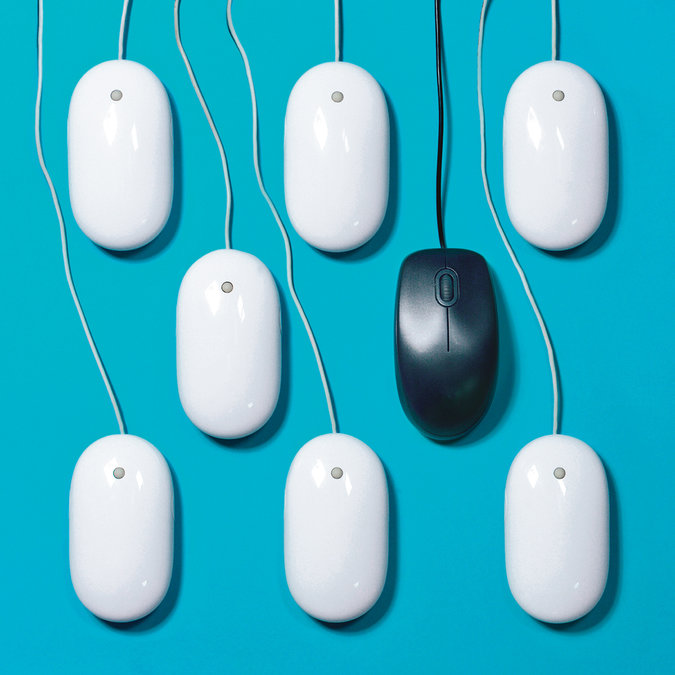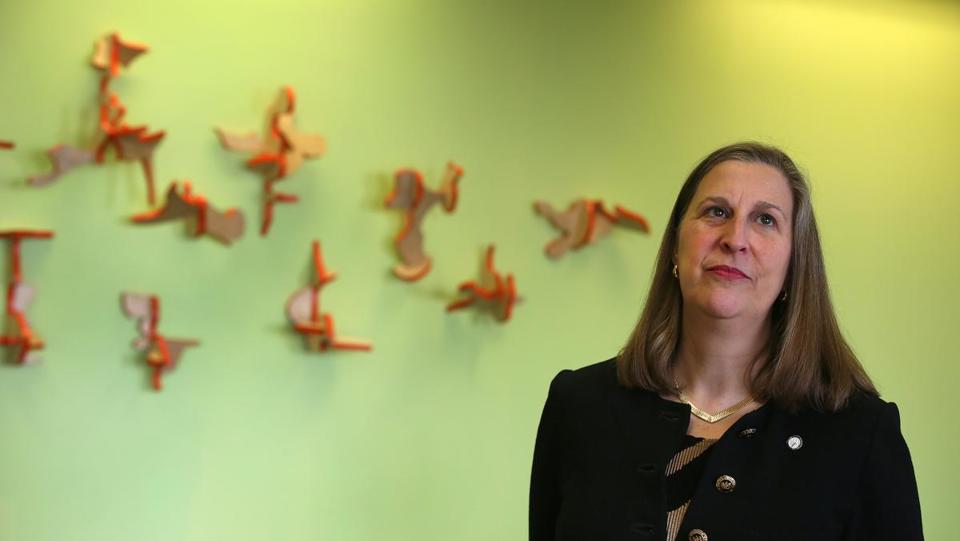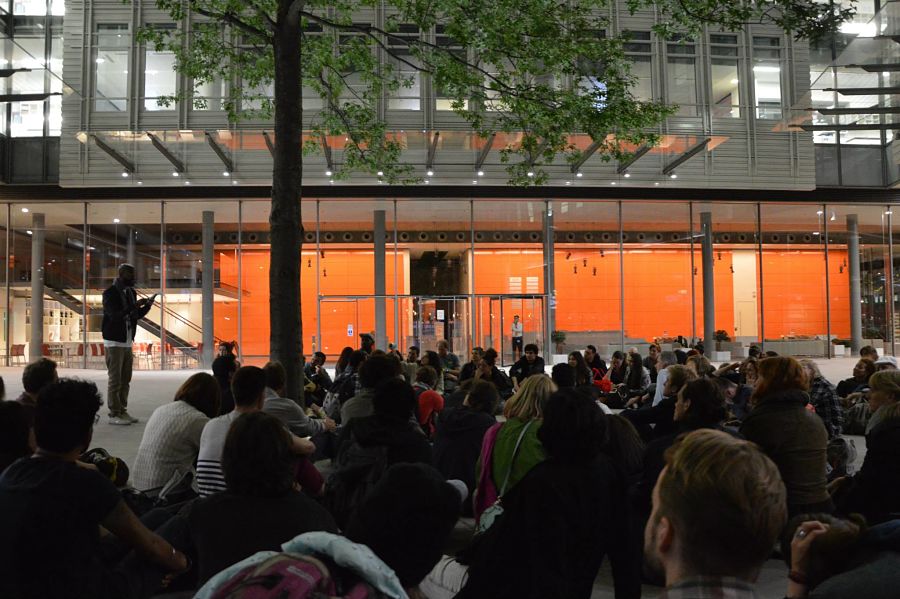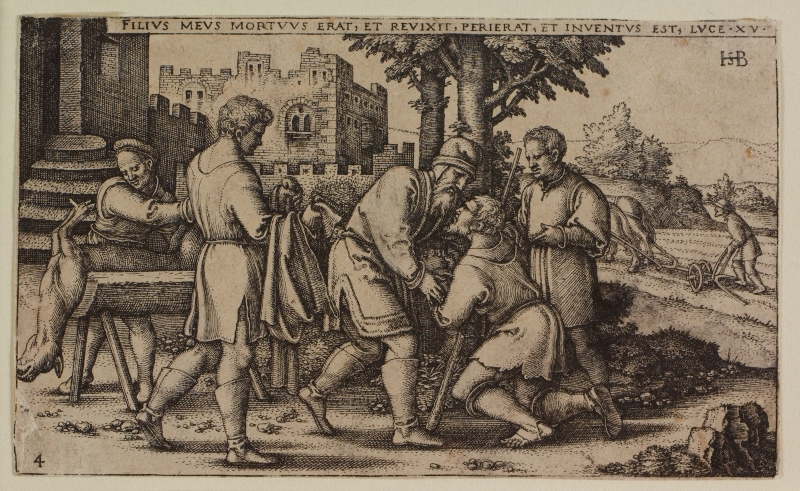available for purchase
at this time.
In The Intersection
#StaffChat: Diverse Hiring Practices
November 13, 2015#StaffChat posts feature issues, articles, and news that the C1 team discusses as part of our weekly all-staff meeting. We’d love to hear your thoughts too — hit us up on Facebook or Twitter!
♦♦♦♦♦
This week we are exploring ways to make our company more inclusive and how to ensure we create a staff that is diverse and representative of our city. Here are a few articles we’ll be using to prompt our conversations:
- — Thoughts on Diversity Part 2. Why Diversity is Difficult. via Medium
- — Has ‘Diversity’ Lost Its Meaning? via New York Times Magazine
- — You Want A Diverse Theatre? Prove it. via HowlRound
The first article from Medium, written by former Twitter Engineering Manager Leslie Miley, is an interesting case study. Although his essay gives insight into workplace diversity issues in the tech world and not in an arts context, a lot of the problems at Twitter are present in workplaces of all kinds. In the piece, Miley details some of the problematic approaches to diversity he witnessed at Twitter:
Personally, a particularly low moment was having my question about what specific steps Twitter engineering was taking to increase diversity answered by the Sr. VP of Eng at the quarterly Engineering Leadership meeting. When he responded with “diversity is important, but we can’t lower the bar.” I then realized I was the only African-American in Eng leadership.
…
Why wouldn’t there be a concerted effort to invite the few African American employees to these events? Is it because, as one colleague told me, “they forgot that you were black?” Is a prerequisite to working in tech as a minority that one is expected to, in the eyes of the majority, sublimate your racial identity to ensure a cultural fit? In attempting to achieve the appropriate level of blackness that makes me palatable to tech, had I unwittingly erased the importance of maintaining my blackness in a sea of white faces?
Link Roundup – 11/6/15
November 6, 2015Link Roundups feature articles and bits of internet goodness that our dramaturgy team digs up. If you find something you want to send our way, drop us a line on Facebook or Twitter!
♦♦♦♦♦
The Guardian has an article asking organizations to consider how they impact the local communities that don’t necessarily see their work:
Every theatregoer has an example of a play that changed their life to a greater or lesser extent. However, the real question I reckon theatres need to ask themselves is not whether what they do impacts on those who go to their shows but whether what goes on in their building really has a significant impact for those who have never stepped inside it? This is not about an individual’s response and relationship to a particular show in a particular building, but about a play and a venue’s relationship to the community at large.
♦♦♦♦♦
The LA Times has a story summing up the recent stats surrounding theatre donors and attendance:
Theaters are making adjustments by trying new approaches, she said, including more emphasis on shows geared toward children and parents.
The report said that productions for young audiences were “a bright spot” in which attendance grew 12.9% between 2010 and 2014. But childrens’ series accounted for just 3% of total attendance at the 118 theaters surveyed over the five years.
“More theaters would benefit from producing high-quality programming for multigenerational audiences,” Eyring said. “Not only because the numbers tend to be on the rise, but it’s a way of engaging the next generation of theatergoers.”
#StaffChat: The Jubilee
October 30, 2015#StaffChat posts feature issues, articles, and news that the C1 team discusses as part of our weekly all-staff meeting. We’d love to hear your thoughts too — hit us up on Facebook or Twitter!
♦♦♦♦♦
This week our staff is examining The Jubilee — an initiative inviting theatres across the country to commit to producing only plays written by women, people of color, LGBTQA individuals, and writers with disabilities during the 2020–21 season.
Here are a few of the articles we’re talking about this week:
- — Welcome to the Jubilee on HowlRound
- — How To Diversify U.S. Stages in One Fell Swoop: The Jubilee Has a Radical Plan in American Theatre
- — You Don’t Have to be an Ally, but Don’t be an Enemy: A Response to the Jubilee Responses on HowlRound
In the first HowlRound post, the committee of The Jubilee lays out their vision for the future of American theatre, along with quotes from some of the artists that are involved in the initiative. Aditi Kapil, the Playwright-In-Residence at Mixed Blood Theatre and a former C1 playwright, thinks about the intention of the project like this:
It’s like we’ve all been hanging out at this party and one guy keeps talking and talking, and now it’s 2020 (8:20 p.m. in this metaphor) and we decide that, just for a minute, everyone else is going to say stuff, respond, talk to each other, change the subject, whatever. And that goes on for a minute. And then it’s 2021. How might the conversation have shifted or evolved? And what happens now that we’re all talking? Because that’s generally when the party gets good, right? That’s what I wonder about. A lot.
The companies that have already taken the Jubilee pledge are listed on HowlRound, but the invitation is still open to anyone who wants to join. Participants are invited to a weekly conference call to talk about how the project is going, but it’s worth noting that no one will be monitoring the companies that sign on or making sure each season fits the project’s goals — Jamie Gahlon explains this idea further in American Theatre:
“Right now, the role of the Jubilee committee is really to help amplify the fact that that institution has made the pledge,” says Jamie Gahlon, senior creative producer of HowlRound and Jubilee committee member. The 39 theatres who have signed on so far “are joining this huge national block party that we are having, more or less,” says Gahlon. “I think the responsibility for following through on the pledge and figuring out specifically what it means to that theatre or that community really falls on the person who has signed on. I don’t think anyone on this committee wants to be policing any of that, we don’t feel like that is our role.”
This announcement has stirred up quite a bit of conversation online, with lots of questions being raised, as well as a fair amount of negative response from people who feel the initiative is exclusionary. In response to criticism Catherine Castellani posted a follow up on HowlRound:
I’ve read responses to Jubilee that actually state that systemic sexism/racism is OK because no one flat out comes out and says No “You People” Allowed. You’re free to say it; that’s your right. But the rest of America is not going away. You get to choose your response to change. You can attack your fellow artists, or you can do something else—something positive and worthwhile.
You don’t have to be an ally. But don’t be an enemy.
We’re going to spend some time talking about a few of the questions raised in response to Jubilee at the upcoming staff meeting. Here’s a few to get us started in advance:
- — If C1 were to take the Jubilee pledge, how would our 2020/2021 season look different from our usual seasons?
- — How would theatre in Boston be different if C1 joined Jubilee?
- — What artists would you want to see produced in a Jubilee year?
- — Jubilee specifically focus on the identity of playwrights — how do you think that does or does not change the conversation about equity in theatre?
Link Roundup! – 10/23/15
October 23, 2015Link Roundups feature articles and bits of internet goodness that our dramaturgy team digs up. If you find something you want to send our way, drop us a line on Facebook or Twitter!
♦♦♦♦♦
The Boston Globe has another article about local theatre space, this one addressing the role of Julie Burros on the issue:
But the lack of a robust public response from City Hall to recent developments has raised eyebrows. Is Burros just a figurehead, and how committed is Walsh to the arts?
“This is an opportunity for him to show he is a champion of the arts,” said Matt Wilson, the executive director of MASSCreative, a statewide advocacy group that made arts an issue in the Boston mayoral race. “We hope he seizes it.”
What people keep referencing is what Walsh’s predecessor Tom Menino did. Over two decades, Menino used his bully pulpit to get private and public partners to restore aging theaters, including the Paramount, Modern, and Opera House, which helped jumpstart the revitalization of Downtown Crossing.
♦♦♦♦♦
This post from The Guardian asks what theatre spaces might be like if they operated more like town squares:
But there are significant differences between the civic function of the theatres of almost 60 years ago and that of theatres in the 21st century. The days when every town thought it should have a theatre as a matter of pride, and to demonstrate how cultured it is, are long gone. Often, increasingly cash-strapped local authorities see their theatres as a drain on resources rather than an asset, and, quite rightly, they don’t see that what people really want and need is yet another revival of Private Lives. So how can those in the arts create new or better relationships with local authorities and other local partners, to ensure that the arts stay on the agenda and remain part of the conversation about who we are and how we live together?
Link Roundup! – 10/17/15
October 17, 2015Link Roundups feature articles and bits of internet goodness that our dramaturgy team digs up. If you find something you want to send our way, drop us a line on Facebook or Twitter!
♦♦♦♦♦

The Colonial Theatre, BU Theatre and the Shubert Theatre. (Blng/Flickr, BU Today, Citi Performing Arts Center)
The ARTery’s Ed Siegel has a good breakdown of the recent space shake-up in Boston:
Although every situation is different, Walsh needs to step into Menino’s shoes and make sure that the energy and commitment that Menino put in place is not diminished. This is more than a matter of helping large institutions. Without the Huntington’s stewardship of the Calderwood, the SpeakEasy Stage Company would not have grown from a small theater to such an important midsize one. Company One Theatre would probably not have grown from the fringe to one of the best theaters in Boston. As Jane Chu, chairman of the National Endowment for the Arts, the Boston Foundation’s Paul Grogan and the Barr Foundation’s James Canales have said, there is an ecology to an arts scene. And the health of large institutions is important to small ones as well.
♦♦♦♦♦
Playwright Annie Baker (THE FLICK, THE ALIENS) joined Mark Maron on his WTF podcast this week to talk about her writing process and the state of the American theatre. It’s a great listen — check it out!
Link Roundup! – 10/9/15
October 9, 2015Link Roundups feature articles and bits of internet goodness that our dramaturgy team digs up. If you find something you want to send our way, drop us a line on Facebook or Twitter!
♦♦♦♦♦

Huntington Theatre Company artistic director Peter DuBois, left, and managing director Michael Maso in front of the BU Theatre. Jonathan Wiggs/Globe Staff
The Boston Globe has a story about this week’s big news regarding the partnership between Boston University and the Huntington Theatre:
After 33 years, Boston University and the Huntington Theatre Company are parting ways, and the university is putting the BU Theatre up for sale, effective immediately. For the highly regarded Huntington, which just two years ago won a Tony Award for regional theater, the dissolution of the partnership with BU ushers in a period of uncertainty.
♦♦♦♦♦
Early career director Lucy Gram’s musings in HowlRound about life as an “emerging” artist are great:
Remember, as difficult as it is to make a life in the theatre, it is something I am lucky to be pursuing. What I am pursuing isn’t a career, or “success,” or a title. It’s an artistic practice. It’s a lens through which to look at life; a platform on which to ask questions about the world we know and create visions of worlds we have so far only imagined.
Link Roundup! – 10/3/15
October 3, 2015Link Roundups feature articles and bits of internet goodness that our dramaturgy team digs up. If you find something you want to send our way, drop us a line on Facebook or Twitter!
♦♦♦♦♦
The Oregon Shakespeare Festival’s new Play On! program is commissioning 36 playwrights and pairing them with dramaturgs to translate 39 plays attributed to Shakespeare into contemporary modern English. The project is detailed in a HowlRound essay by OSF’s Lue Douthit:
This is not the first time this has been done. It may be the first large-scale project involving so many dramatists and other theatre artists. We already adapt Shakespeare every time we produce the plays. And by that, I mean that we examine different versions (quarto versus folio), we edit scenes or move them around, we change words that have changed meaning over time, and we adjust language to fit casting choices and production concepts. (In fact, it’s a rare production of a Shakespeare play with everything intact.) But I’m curious to see what we learn about the language and how the plays work if we hold all the other variables in place.
♦♦♦♦♦
This Stage magazine has a story about disability in theatre:
Sherer, who uses a wheelchair, has a trove of stories to share about the discrimination she’s faced in her professional life. An example: Several years ago, she tried to audition for a soap commercial but couldn’t get into the room (the only entrance was a staircase). The casting directors asked her to meet them in the alley adjacent to the building; she complied. As part of the audition, she waved her hand in the air, only to discover that her palm and fingers had been grayed from maneuvering her chair along a surface covered in grime.
Link Roundup! – 9/25/15
September 25, 2015Link Roundups feature articles and bits of internet goodness that our dramaturgy team digs up. If you find something you want to send our way, drop us a line on Facebook or Twitter!
♦♦♦♦♦
Joy Mead’s great article about unconscious bias for American Theatre is a must-read:
Implicit biases can lead us to interpret plays by female and nonwhite writers through the lens of our stereotypes, which can impair our ability to see them accurately. Scientists who study cognition have found that stereotypes prime us with expectations and assumptions, and then confirmation bias motivates us to focus on anything that confirms our preconceptions and overlook the rest.
There are regular examples of this dynamic in theatre. For example, in a recent Boston Globe review of A. Rey Pamatmat’s Edith Can Shoot Things and Hit Them at Company One Theatre, critic Jeffrey Gantz wished the Filipino-American characters’ “culture [was] on display” and complained “it seems odd they have no racial problems at school.” Gantz assumed the playwright’s identity was the most relevant context for his work and looked so hard for the play he expected that he missed the one actually before him. Playwright Mike Lew calls this phenomenon the “anthropological gaze,” noting that it can be a serious obstacle to production. “How do you distinguish the singularity of your voice when your voice isn’t really being heard to begin with?” Lew asks.
♦♦♦♦♦
Speaking of A. Rey Pamatmat, his recent 2amt post is also another good read about representation on stage:
If you’re telling me the only way to preserve an enduring work of art is by performing it in a way that is racist and outdated, then you’re telling me that white supremacy is so central to the work that it’s not an enduring piece of art. Enduring art can be revisited and reconceived to speak to people of a different time and in a different context than the ones in which it was created — you know, it can endure. Frankly, I don’t believe white supremacy is so central to the works of Gilbert and Sullivan or to The Mikado specifically that it’s reworking would mean nothing of value would be left in the show. It could be produced in a way that speaks to the broader audience of people that make up New York theatregoers. The most important thing to preserve in The Mikado is not the fact that it was conceived from ideas of white supremacy in a time and place of unchallenged white supremacy. The important things to preserve are catchy tunes and some poo jokes.
Link Roundup! – 9/18/15
September 18, 2015Link Roundups feature articles and bits of internet goodness that our dramaturgy team digs up. If you find something you want to send our way, drop us a line on Facebook or Twitter!
♦♦♦♦♦
In American Theatre, Teresa Eyring talks about the Midnight Run in London:
The brainchild of the London-based Nigerian poet and playwright Inua Ellams, the Midnight Run is now in its 10th year and has been replicated in 4 other cities. In this anniversary year, groups of 30 or more people gathered at theatres in South, North, East, and West London (the Albany, the Roundhouse, the Almeida, and the Bush). Each group was populated with a facilitator and several artists. The facilitators’ jobs were to map out a journey through their assigned sections of London. Artists, who were part of our group, gave workshops along the way. Participants experienced parks, churchyards, secret pathways, and businesses they wouldn’t have otherwise seen—or seen in this manner. Rory Bowens, an assistant studio manager at NTS (Nuts to Soup radio), conducted interviews and captured sounds. A story was broadcast at midnight. Meanwhile, Katie Garrett filmed the experience. Honoring UNESCO’s International Year of Light, 50 percent of the proceeds went to provide sustainable lighting to a women’s center in Senegal.
♦♦♦♦♦
Bitter Gertrude’s game of Racist Art Apologia Bingo is worth reading in light of another maddening casting controversy, this involving The New York Gilbert and Sullivan Players’ production of The Mikado:
The main problem with the “preserving ART” argument is that racism and racist caricatures had one cultural context in the Victorian (or Elizabethan, or Classical, or what you will) era, and have completely different contexts now. Fighting to preserve a racist work as written most often vandalizes that work’s original intent. The racist symbol was created to convey a meaning it can no longer convey. Yellowface can no longer convey the meaning Gilbert originally intended when writing The Mikado because that meaning has been superceded by a modern understanding of yellowface’s inherent racism. Even if you believe the yellowface in The Mikado means “Victorians are racist; isn’t that funny?” it can never mean that to an audience in 2015 because yellowface is read as racist in and of itself, and stomping your feet and insisting that Gilbert’s intent was completely different does exactly nothing to change that.
Link Roundup! – 9/11/15
September 11, 2015Link Roundups feature articles and bits of internet goodness that our dramaturgy team digs up. If you find something you want to send our way, drop us a line on Facebook or Twitter!
♦♦♦♦♦
KQED has a story about how the arts can make people more empathetic:
“The arts act as an antidote to that estrangement,” Zaki added, “[and] provide you with a very low risk way of entering worlds and lives and minds that are far from what you would normally experience.”
One study found that reading literature, but not junk fiction, increases a person’s ability to be empathetic. Though Zaki wondered “does reading make you more empathetic, or does being more empathetic make you want to read more fiction?”
People, and some animals, come into the world ready for empathy, because we’re born with what are called mirror neurons. And Zaki believes the arts can stimulate those neurons.
♦♦♦♦♦
On HowlRound, playwright Kira Obolensky talks about how writing for a specific audience has changed her process:
Hayley: I love this notion of “casting” the audience into the piece. Imagining them. And that’s been a shift for you in this residency, even though you’ve written for Ten Thousand Things before.
Kira: I think I’m getting better at it. And I think it is making my plays better. I think, actually, if every playwright—even if they didn’t have access to these amazing audiences—were to think about their plays with a bigger range of humanity in mind for receiving their play, we would have a canon of beautiful, complicated expressions of the world we live in.







